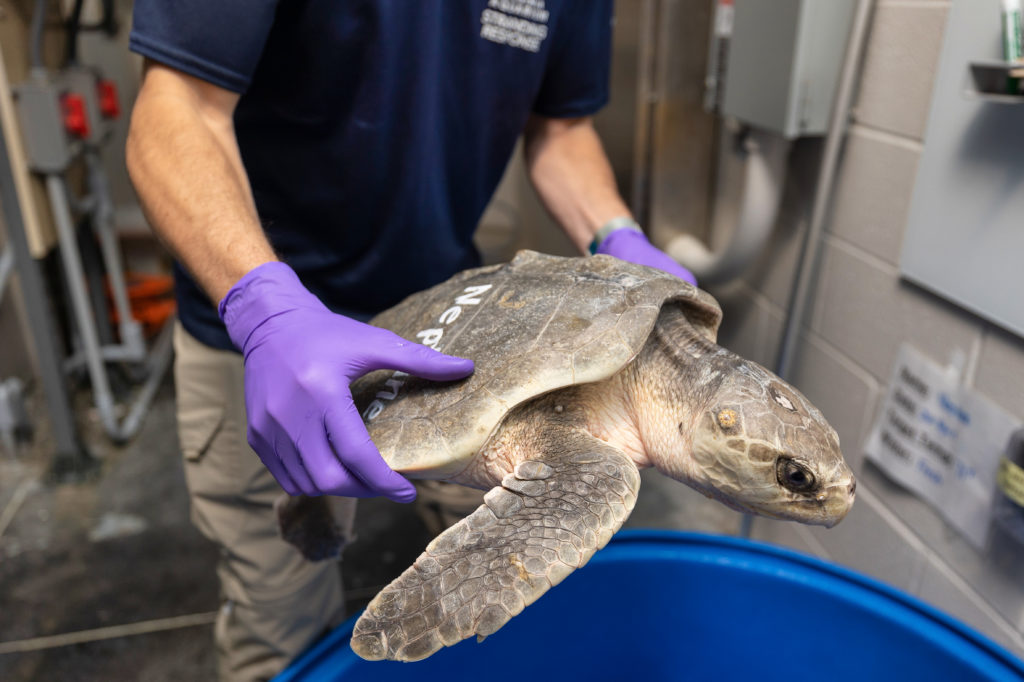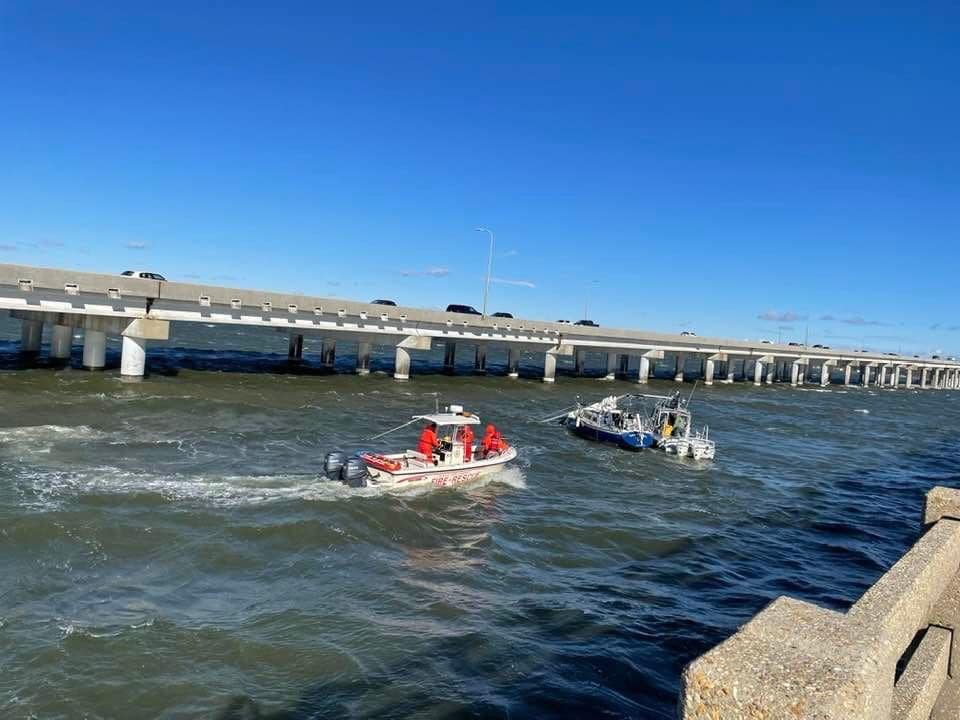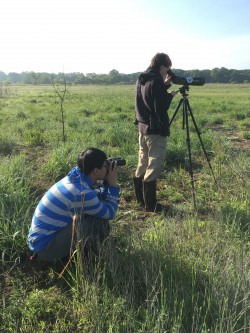It’s a heartbreaking impact humans have on sea turtles in Virginia Beach: they are accidentally hooked by anglers’ fishing gear, which can puncture their bodies or tangle them in fishing line. And it’s not happening miles offshore on deep-sea fishing excursions, but instead right from local fishing piers.
The Virginia Aquarium and Marine Science Center’s Stranding Response Team is now treating its first hooked sea turtles of the season.
The first turtles hooked this season are all Kemp’s ridleys. Turtles named Neptune, Oceana, and Dam Neck were all hooked at fishing piers. The hooks have been removed, but Oceana has shown signs of infection, so is being treated with antibiotics. Dam Neck’s first hook was removed, but a closer examination found a partial hook in the turtle’s intestine. Staff are hoping the fragment passes on its own. Two additional Kemp’s ridleys, Centerville and Doyletown, were tangled in fishing line and are presumed healthy. Once the turtles are cleared by a veterinarian and are eating normally, they will be released.
If the turtles’ names sound familiar, it’s because this year’s rehabilitated turtles are being named after landmarks and waterways of Virginia Beach. The city is celebrating its 60th anniversary this year. The naming program is also part of an education program that aims to educate local anglers so fewer turtles will come to harm.
The Kemp’s ridley turtle is the smallest and most endangered of the sea turtles. Adults are under 30 inches long and weigh between 70 and 100 pounds. Their shells are olive green, and can be almost round when looked at from above. Once a male enters the ocean after hatching, it never again puts a fin on land for the rest of its life. The greatest threat to the Kemp’s ridley is egg poaching, followed by entanglement in fishing gear, habitat degradation, and ocean pollution/marine debris.
Mackenzie W. DiNardo, Virginia Aquarium and Marine Science Center spokesperson, reports that “almost all sea turtle hookings take place near shore, presumably because the turtles are largely foraging in the shallow nearshore waters.” She adds that the turtles are hooked on baits. The turtles don’t seem to be attracted to artificial lures.
When we asked whether any trends are emerging with the growing problem of turtle hookings, and DiNardo said, “It is too soon to tell if there are any trends, but the hooked season started the earliest in the Aquarium’s history (April 25), and we are on track to break records again this year.”
She reports 25 patients as of Tuesday, but the number climbs daily with up to five hooked turtles reported in just one day.
It is very important that hooked turtles receive proper treatment. If you accidentally hook one, don’t try to remove the hook and release the turtle yourself. Use a net to recover the turtle, and cut the line about two feet from the turtle. Keep the turtle out of direct sunlight and keep it damp. Call Stranding Response at 757 385-7575. They are available anytime day or night. They will give you further instructions and will plan a rendezvous. If you are on a fishing pier, contact pier staff. Most piers have equipment for turtle recovery, and have staff that has been trained by the Stranding Response Team. Anglers will not get in trouble for accidentally hooking and reporting an endangered turtle.
As Bay Bulletin reported last July, 2022 set a record for hooked turtles in Virginia. Together, we can try to reduce that trend with a little common sense. If you are fishing and a turtle approaches, reel in your baits and move to another spot. If you are on a pier, simply reel in your baits and take a break until the turtle swims away.
You can find more information at virginiaaquarium.com.
-Kendall Osborne



